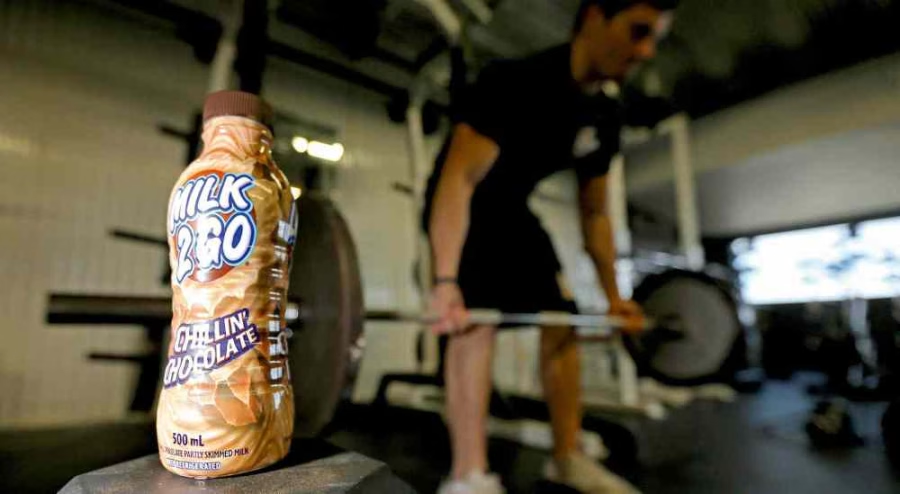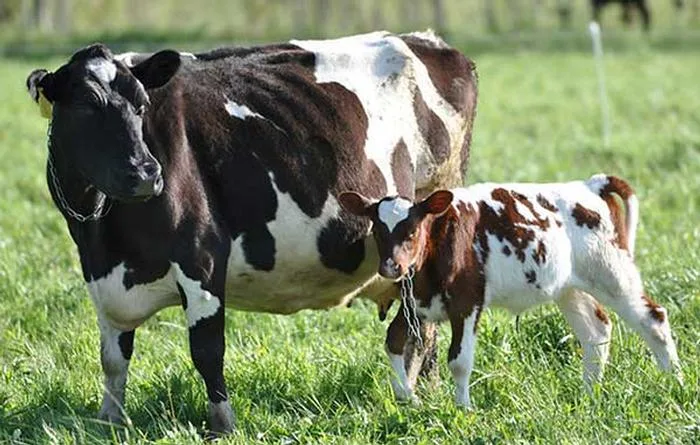Learn how milk and dairy can help you recover after exercise. Discover their benefits for muscle repair, hydration, and energy replenishment.

Have you ever wondered what the perfect post-workout recovery drink would be? The solution can be found in your refrigerator. Dairy, especially milk, is known as a delicious sports recovery drink. This increase in popularity is a transitory fad, and significant scientific studies support it. Here, we want to update you by aggregating current studies on the advantages of milk and dairy products in post-exercise recovery.
“Milk is nature’s recovery beverage,” claims an increasing chorus of sports nutrition professionals.
Still, milk is rather unique for healing. It is not only about the calcium. From replenishing muscle glycogen reserves to healing muscle injury and rehydrating the body, milk provides a complete approach to recovery that challenges even the most sophisticated sports beverages. Keep reading to see how this regular drink could maximize your post-exercise regimen.
Milk: The Ultimate Sports Recovery Beverage
Because of its nutrient-dense mix, milk is one of the great sports recovery beverages. Together, carbohydrates, complete proteins, electrolytes, and water help you recuperate after a workout. Milk replenishes your muscles, rehydrates them, and heals them, enabling quicker and more robust recovery.
Boost Your Energy: The Role of Lactose in Muscle Glycogen Replenishment
Especially in the form of lactose present in milk, carbohydrates are very vital for sports recovery. Lactose restores muscle glycogen levels lost during exercise. Restoring your energy levels depends on this replenishment, which also helps you maintain maximum performance. Lactose ensures you stay energetic and ready for your next training or competition by rapidly replenishing your glycogen supplies, preparing your body for future physical activity.
Nourish Your Muscles: The Power of Complete Proteins in Milk
One of the best sources of complete protein, milk guarantees all the vital amino acids required to synthesize muscle proteins. With other branched-chain amino acids (BCAAs), Leucine makes milk very powerful. A necessary step for healing exercise-induced muscle damage is muscle protein synthesis, essentially activated by Leucine. Milk’s unusual 3:1 ratio of casein to whey proteins also has unique advantages. More slowly digesting casein releases amino acids into the circulation consistently. A sustained rise in circulating amino acids guaranteed by this enhanced absorption is essential for continuous muscle healing and repair.
Stay Hydrated: The Superior Rehydration Power of Milk
Few drinks can equal the potency of milk for rehydration. Milk is an excellent choice for replenishing lost fluids from exercise because of its natural electrolytes and high water content—around 90%. Maintaining fluid balance, muscular action, and general hydration levels depends on electrolytes, including sodium and potassium.
Scientific research supports these assertions. For example, Shirreffs et al. examined how well ordinary low-fat milk rehydrated sports beverages and water. The findings showed that milk restored fluid balance just as effectively—or more effectively—than any other. Likewise, another research found that plain and chocolate milk efficiently restored athletes’ hydration, stressing its pragmatic use in restoring lost fluids.
Recover Faster: How Dairy Proteins Boost Muscle Repair and Performance
Milk consumed after exercise has many advantages for muscular performance and recovery. Critical actors in this process include dairy proteins—especially whey protein—which break down and absorb quickly. This implies they may start healing muscles almost quickly, essential to help lower muscular exhaustion and soreness.
Whey protein, including Leucine, has a high concentration of branched-chain amino acids (BCAAs), which promotes muscle protein synthesis even more. Leucine is especially strong in activating pathways leading to muscle repair and development. Including milk in your post-exercise regimen can thus help you heal muscles much faster, enabling you to perform better in the next exercise.
Maximize Your Gains: How Milk Shapes a Healthier Body Composition Post-Exercise
Milk consumed after exercise may assist in controlling and lowering your later energy consumption. Maintaining a good body composition during exercise training depends mainly on this. Milk’s excellent combination of proteins and carbs helps you feel content for longer, reducing the need to munch on less wholesome meals later. The satiating action of milk proteins—especially casein and whey—is known to increase feelings of fullness and lower total calorie intake, which is attributed to this phenomenon.
Combining dairy proteins with carbs also increases the rate of muscle protein synthesis. More effective muscle development and recovery depend on this synergy of nutrients. Like lactose, carbohydrates in milk restore muscle glycogen supplies and produce an insulin reaction that helps amino acids be absorbed into muscles. Repairing exercise-induced muscle damage and encouraging muscle growth depends on this process, which also helps to change body composition using muscular development gradually.
Why Milk Outshines Traditional Sports Drinks
When it comes to recovery drinks, milk stands out due to its comprehensive nutrient profile. It helps in refueling and rehydrating and aids in muscle repair. To understand why milk is such a powerhouse for recovery, take a look at the comparison of its nutrient content with other popular beverages:
| Nutrient | Plain Milk (8 oz) | Chocolate Milk (8 oz) | Sports Drink (8 oz) |
|---|---|---|---|
| Calories | 150 kcal | 200 kcal | 50 kcal |
| Carbohydrates | 12 g | 30 g | 14 g |
| Protein | 8 g | 8 g | 0 g |
| Fat | 8 g | 8 g | 0 g |
| Calcium | 300 mg | 300 mg | 0 mg |
| Electrolytes | Yes | Yes | Yes |
Compared to other sports beverages, both plain and chocolate milk have some clear benefits. First, they provide a balanced and natural nutritional profile, including water, electrolytes, proteins, and carbs. After exercise, these elements cooperate to refuel, recover, and rehydrate the body.
Studies comparing milk to conventional carbohydrate-based sports drinks have shown that milk is as efficient, if not more, in replenishing glycogen levels. For muscle repair and synthesis, its protein content—more significantly, its 20% whey and 80% casein—is vital. Unlike other sports beverages, milk’s whole protein composition guarantees that your muscles acquire all amino acids for the best recovery.
Rehydration-wise, milk’s great water content (90%) and natural electrolytes like sodium and potassium make it a powerful choice for fluid balance. Because of its electrolyte mix, research comparing milk to water and commercial sports drinks revealed that milk was better for rehydration.
Chocolate milk is unique in that it has a 4:1 carbohydrate-to-protein ratio. This larger carbohydrate load greatly improves glycogen replenishment. Furthermore, the mix of protein and carbohydrates after exercise increases the rate of muscle protein synthesis, helping recovery.
Furthermore, cocoa flavanols found in chocolate milk are beneficial. These substances have antioxidant effects that might assist in lowering oxidative stress brought on by exercise, possibly limiting muscular damage and pain. Chocolate milk, therefore, not only meets but frequently exceeds many commercial sports beverages in terms of speed and efficiency in recovery.
Optimize Your Recovery: The Essential Protein Intake for Post-Exercise Repair
Ensuring enough protein intake is vital for the best recovery after a workout. Experts advise eating 1.4 to 2 grams of protein for every kilogram of body weight. This will significantly improve your muscle healing and development. Practically speaking, an eight-ounce glass of dairy milk provides twelve grams of carbs and eight grams of natural, premium protein for recovery. This makes it a handy and efficient recovery drink that meets the body’s need for repairing and replenishing after exercise.
Chocolate Milk: Your Secret Weapon for Rapid Recovery
Given its ideal 4:1 carbohydrate-to-protein ratio, chocolate milk stands out as a recovery drink. This ratio is perfect for rebuilding glycogen levels and commencing muscle repair. While the protein helps muscles heal, carbs give your body the energy it needs to replenish.
The maximum advantages of chocolate milk depend on timing. Eating it right away after exercise and again two hours later guarantees a constant supply of nutrients needed for healing. Maintaining high amino acid levels is essential for quick muscle regeneration and lessening of pain; hence, this double dose aids in this regard.
Apart from its nutritional benefits, chocolate milk is reasonably priced. It is readily available for athletes at all levels as it offers a nutritional profile comparable to many expensive recovery drinks. The added cocoa flavanols may help muscles recover more quickly, offering an additional advantage over ordinary milk.
The Bottom Line
Including milk in your post-exercise regimen can help improve your recuperation process. Milk refills depleted energy reserves, heals muscular damage, and rehydrates the body with its potent mix of carbs, complete proteins, and electrolytes. Both plain and chocolate milk have significant advantages; chocolate milk’s added boost comes from its greater carbohydrate count. Including milk in your recovery program can help you promote better changes in body composition, recover quicker, and perform better. Incorporating milk into your post-exercise routine can significantly enhance your recovery process. Thanks to its potent combination of carbohydrates, complete proteins, and electrolytes, milk efficiently refuels depleted energy stores, repairs muscle damage, and rehydrates the body. Whether you choose plain or chocolate milk, both offer remarkable benefits, with chocolate milk providing an extra boost due to its higher carbohydrate content. Adding milk to your recovery regimen can improve overall performance, help you recover faster, and support healthier body composition changes. Make milk your go-to recovery drink and experience the difference it can make.
Key Takeaways:
- Milk provides a unique nutrient combination of carbohydrates, complete proteins, electrolytes, and water, making it an effective recovery drink.
- Lactose in milk aids in replenishing muscle glycogen stores depleted during exercise, restoring energy levels.
- The complete proteins, especially branched-chain amino acids (BCAAs) like leucine, support muscle protein synthesis and reduce exercise-induced muscle damage.
- The 3:1 ratio of casein to whey proteins ensures a sustained release of amino acids, crucial for extended muscle repair.
- Milk’s high water content and natural electrolytes make it excellent for post-exercise rehydration.
- Research shows that consuming milk after exercise helps in reducing muscle soreness and speeding up muscle function recovery.
- Milk ingestion post-exercise can contribute to favorable body composition changes by attenuating subsequent energy intake.
- Chocolate milk, with its optimal 4:1 carbohydrate to protein ratio, offers additional recovery benefits.
- Regular milk and chocolate milk are as effective as traditional sports drinks in promoting refueling, rehydration, and muscle recovery.












